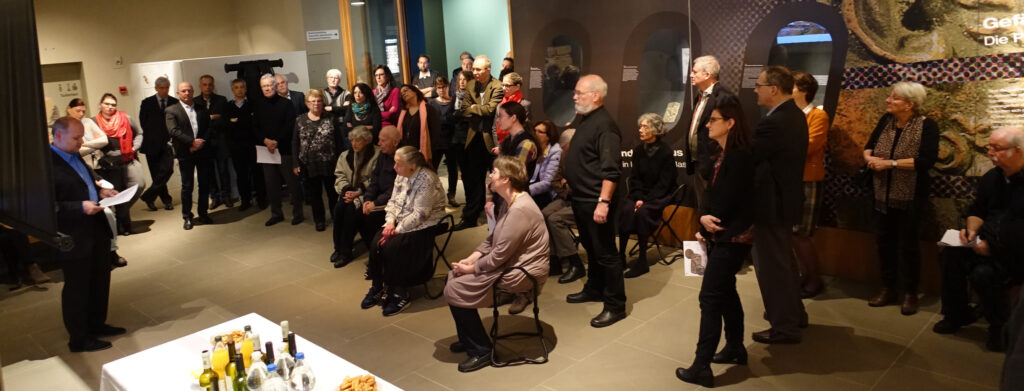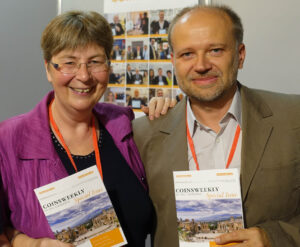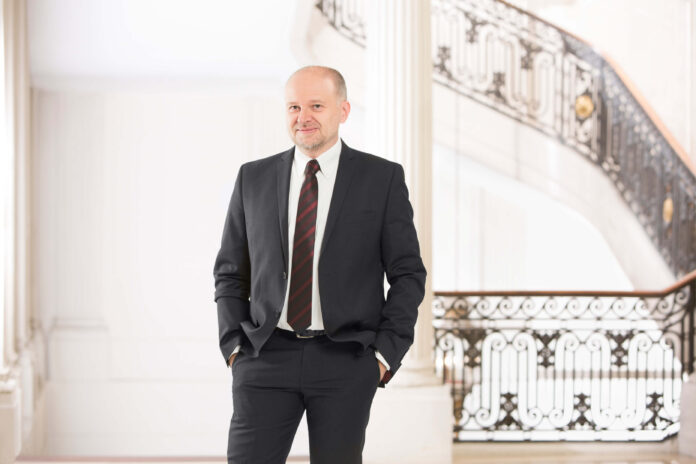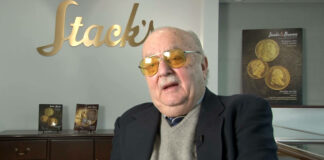When I think of Michael, I see him standing in the waiting hall of the SBB, the Swiss Railway station of Basel. It was quite early in the morning, sometime in the early summer of 1998. Michael and I were standing there, in our best business outfits, waiting for a friend who had rushed off to get us some chocolate buns. The three of us were headed to Bern – our friend because she worked there, Michael and I because we had an interview for a job. Mine was scheduled in the morning, Michael’s in the afternoon. The only problem was that we had both applied for the same position. We were nervous, of course. I hid it by explaining to Michael that he didn’t stand a chance against me anyway. Michael just laughed about that. Then he told me that I was a brilliant numismatist and that I absolutely deserved the job.
That’s how Michael Matzke was. If there was ever a colleague without any kind of malice or jealousy, then that was him.
One of the Leading Experts in Medieval Numismatics
Michael Matzke studied at the University of Tübingen majoring in Medieval History. He combined this with studies in several other fields including, of course, numismatics. He completed part of his studies at the Università degli Studi di Pisa where he perfected his excellent knowledge of Italian.
Starting in 1991, he worked as Research Assistant at the University of Tübingen, namely – how suitable to his character – in completely different areas: at the Institute for Regional History, the Research Centre for Islamic Numismatics and at the Institute for Classical Archaeology.
Well, Michael Matzke liked to think outside the box – in every possible direction. He was just as comfortable discussing early electrum coinage as he was talking about the artistical value of contemporary commemorative coins. Michael had a well-founded opinion on many things, and he was glad to correct his views light-heartedly whenever he heard someone presenting better arguments.
In 1995 he completed his studies with a doctoral dissertation. His study on Daibert of Pisa was published three years later by the renowned publishing house Thorbecke. Of course, Michael Matzke focused in his work on economic and numismatic aspects, but the historical background was just as important to him as his aspiration to make his research accessible to a broad public. That’s why a detailed article on the topic was published in the magazine MünzenRevue long before his thesis was published by Thorbecke.
After his doctorate, Michael Matzke shared the fate of many brilliant numismatists: he made a living with smaller and larger projects, teaching assignments and other activities. Soon he was considered one of the leading experts in medieval numismatics. In this context he was called to Cambridge in 1999; it says a lot about him that he held a lectureship at the Classics Faculty, worked on the 12th volume of the Medieval European Coinage project on northern Italy and was Assistant Keeper responsible for ancient and medieval coins of Europe at the Fitzwilliam Museum.
Michael Matzke’s knowledge was incredibly vast. And at the same time he managed to connect all numismatic spheres. While being a member of the Schweizerische Arbeitsgemeinschaft für Fundmünzen (Swiss Working Group on Hoard Coins) and working on the Swiss Inventory of Coin Finds since 2015, he often visited numismatic fairs and had a good connection to collectors and coin dealers. He repeatedly wrote articles addressed to a broad public on the topics of latest numismatic research. Some of them were also published by CoinsWeekly.
Curator at the Coin Cabinet of the Basel Historical Museum
But his exceptional expertise wasn’t what made Michael Matzke so special. He was a person able to connect with anyone. Tolerant, open-minded, understanding and always friendly without ever sacrificing his own opinion: it was his social skills that made him such a great asset to the Basel Historical Museum, where he worked part-time as curator since 2006.
In 2013 he opened the completely re-designed permanent exhibition of the coin collection there. He incorporated many innovations into the exhibition by using media stations, touchscreens and audio plays – and this wasn’t as common in 2013 as it is today.

The Importance of “Paduans”
In 2016 Michael Matzke opened an exhibition called “Faked Antiquity? The Paduans and the Fascination with Antiquity”, an exhibition that was nothing less than the rehabilitation of the reputation of a category of works of art that had been neglected for centuries. As a representative of an interdisciplinary approach, it was natural to him to question the prejudice that exists in the numismatic world regarding these “Renaissance forgeries”.
In his exhibition, Michael Matzke demonstrates that, at the time they were created, Paduans were not considered forgeries but works of art that were not supposed to imitate ancient models but surpass them. At the beginning of 2019 he published the scholarly catalogue complementing this exhibition.

Issue-Oriented, Pragmatic and Irreplaceable
Michael dealt very openly with his serious illness. Anyone who had the chance to talk to him during the last months of his life couldn’t help but be impressed by how unsentimentally he did not focus on his own fate but ordered everything systematically and prepared it so that things could go on after him.
In the last month of his life, when he was already severely affected by the disease, he still wrote texts for the exhibition “Gold and Glory” because he did not want to miss the opportunity of displaying coins in this important selection of medieval art.
Michael Matzke died in the last hours of 20 May 2020 surrounded by his family.
With him we lose a colleague who always did everything he could for the scholarly world without displaying any kind of vanity. We mourn with his wife Gerhild and his two sons Beneke and Hendrik. Our deepest sympathy goes to them.
The best that can be said about a person is true for Michael Matzke: the world became a little brighter because of him.




